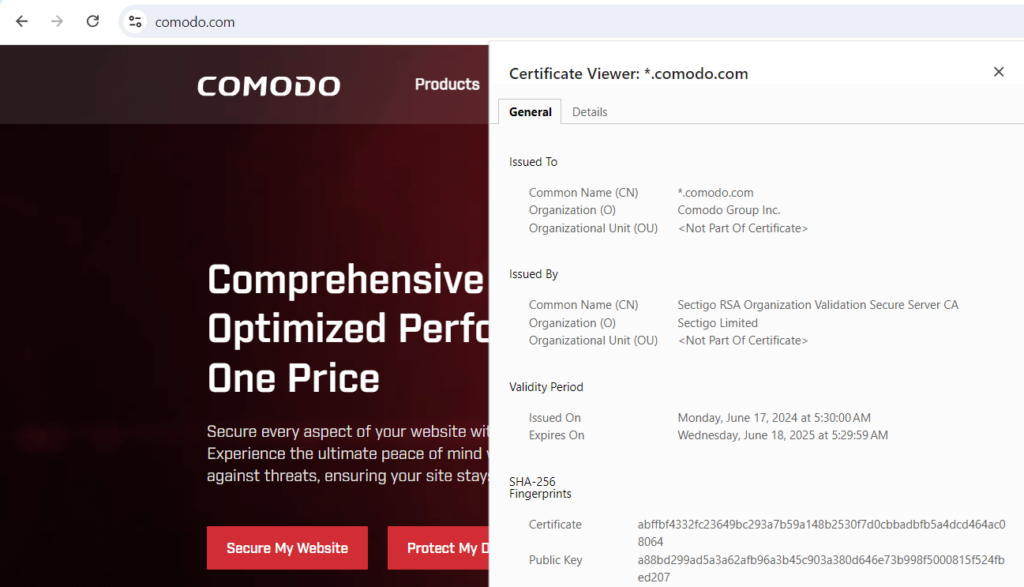Rate this article: 



 (4 votes, average: 5.00)
(4 votes, average: 5.00)




 (4 votes, average: 5.00)
(4 votes, average: 5.00)If you’re looking to secure multiple levels of subdomains with a wildcard SSL certificate, you’re in the right place! A wildcard SSL certificate for nested subdomains (e.g., second-level subdomains [“sub-subdomains”] and third-level subdomains [“sub-sub-subdomains”]) can secure any single level of subdomain, ensuring that every part of your website remains safe and encrypted.
Feeling a bit confused? That’s understandable, and we’ll provide some clarifications shortly. But for those of you following along, you know how useful multiple levels of subdomains can be for larger private and public sector organizations. Knowing this, let’s explore what wildcard SSL certificates are for second-, third-, or multiple-level subdomains. We’ll then jump into how you can use these certificates to protect your web presence efficiently.
Ensure robust encryption across all your first-level subdomains for your domain for only $69.78/year.
Get a Positive Wildcard Certificate
There are two approaches for covering multiple subdomains using wildcard SSL/TLS certificates. One approach is to use multiple certificates (traditional wildcard SSL/TLS certificate), one for each subdomain level. This is something to consider if your subdomains are on a single domain.
Another approach is to use a single certificate that covers all subdomain levels simultaneously using a multi-domain wildcard certificate. The certificate’s added benefit is that it enables you to secure multiple domains using one certificate.
Here’s a quick glimpse at the difference between these two options:
| Option #1: Standard Wildcard SSL Certificate | Option #2: Multi-Domain Wildcard Certificate | |
| First-Level Subdomains | Yes | Yes |
| Second-Level Subdomains | Separate Certificate Required | Yes |
| Third-Level Subdomains | Separate Certificate Required | Yes |
| Multiple Domains | Covers a Single Domain Only | Yes |
| Shop Wildcard Certificates | Shop Multi-Domain Wildcards |
Let’s explore each of these two options more closely.
A wildcard SSL certificate can protect any single level of domain. For instance, a wildcard SSL certificate can secure first-level, second-level, or third-level subdomains. However, it can only secure one level at a time — a single standard wildcard certificate can’t be used to secure more than one subdomain level simultaneously.
Here’s how it works: A traditional wildcard SSL certificate uses an asterisk (*) in the domain name to cover all single-level subdomains. For instance, if you have a wildcard certificate for *.example.com, it will secure first-level subdomains like blog.example.com, shop.example.com, and mail.example.com. This asterisk acts as a placeholder, making it possible to cover all possible subdomains at that level.

Image caption: This wildcard SSL certificate for Comodo, shown by the asterisk (*) before the domain name (e.g., *.comodo.com), secures all subdomains under the main domain.
However, the same certificate won’t cover additional levels of subdomains simultaneously, such as:
To secure these other levels of subdomains at the same time, you would need to use either:
Get extensive coverage for your domain and all single-level subdomains starting at just $156.02/year.
Shop Comodo Wildcard SSL Certificates
If you need to secure multiple levels of subdomains across several domains simultaneously, you’ll need a more advanced solution. This is where option #2 comes into play.
This type of certificate allows you to secure many domains and their subdomains simultaneously, no matter the level, using a single certificate. This approach is ideal for businesses with a complex web presence, offering flexibility and ease of management.
Secure all your domains and subdomains with business validation using an organization validation (OV) multi-domain certificate from Comodo for just $265.78/year. Protect your brand and business with robust encryption and trusted security.
Get a Comodo Multi-Domain Wildcard SSL Certificate
It must be noted that multi-domain wildcards, also known as “SAN wildcards,” “SAN Multi-Domain Wildcard SSL Certificates,” or “UCC wildcards” are all different names for the same type of SSL certificate. They can secure multiple domains and their subdomains with a single certificate.

Image caption: This SAN certificate for Sectigo covers multiple domains and has the capacity to cover multiple levels of subdomains. Additional domains and subdomains are listed as SAN entries under the “Field Value” section.
Scenario #1: E-commerce business with multiple regions and a multitude of subdomains on different levels:
Scenario #2: Educational institution with multiple campuses with multiple levels of subdomains for each location:
Scenario #3: Global technology company with offerings for North American and European Union customers:
In these scenarios, a multi-domain wildcard SSL certificate for multiple-level subdomains would be ideal. It would cover all subdomains across multiple sites and subdomain levels.
Have you ever wondered how large websites keep their many sections secure? Now you know one of their secrets! By understanding and using these certificates correctly, you can keep your website secure at all levels with less hassle and at lower cost.
With a top-tier Multi-Domain Wildcard SSL/TLS certificate, you can enjoy industry-standard 256-bit encryption. Enjoy flexibility and simplified management starting at just $156.02/year.
Get a Multi-Domain Wildcard
Choosing Comodo Multi-Domain Wildcard SSL Certificates is an excellent decision for several reasons:
When you buy a multi-domain wildcard SSL/TLS certificate from ComodoSSLstore.com, you can enjoy:
So, whether you’re looking to use one or more wildcard SSL/TLS certificates to secure multiple-level subdomains, we’re here to help. Our products provide flexibility and robust security, making them ideal solutions for businesses needing comprehensive protection across various domains and subdomains.